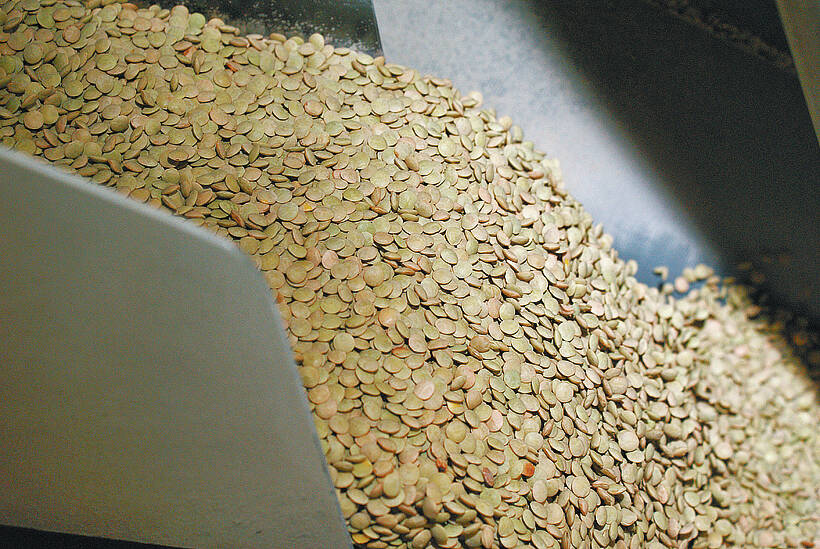SASKATOON — Global supplies of green lentils will be burdensome in 2025-26, say analysts.
Maisam Ali, supply chain analyst with the Global Pulse Confederation (GPC), is forecasting that Canada, the United States, Russia, Turkey and Kazakhstan will produce two million tonnes of the crop in 2025.
That would be a 615,000-tonne increase over the previous year.
“When factoring in carryover stocks and imports, the global supply picture only grows heavier,” he said in a recent article published on GPC’s website.
Stat Publishing agrees that the green lentil market is under pressure.
Read Also

Defence investments could benefit agriculture
A bump in Canada’s NATO spending commitments could lead to infrastructure investments that would benefit rural areas
“Markets appear to finally realize global green lentil output will exceed prospective demand by a wide margin,” editor Brian Clancey stated in an Aug. 29 article.
“Many end users expect to see a short-term quickening in the pace of price declines for green lentils and continuing narrowing of the spread between it and reds.”
Stat’s numbers are slightly different than Ali’s. It is forecasting 1.91 million tonnes of global production, up from 1.53 million tonnes last year.
The premium for large green lentils over red lentils in Canada has averaged US$120 per tonne in 2025-26, down from $356 last season.
“Some market participants would not be surprised to see large greens flirt with a discount to reds,” said Clancey.
The last time that happened was in 2013-14 when large greens traded at a $34 per tonne discount to reds.
Kent Anholt, operations manager with Rayglen Commodities Inc., said large green lentils were selling for $0.24 per pound on Sept. 2, down from $0.35 earlier this year.
“We’re definitely seeing some pricing pressure,” he said.
Overseas buyers are banking on a large Canadian crop, and farmers seem to be aware of the situation because some are willing sellers at today’s prices, said Anholt.
Ali said Canada will likely harvest 1.15 million tonnes of green lentils, up from earlier forecasts of 842,000 tonnes.
U.S. production is pegged at 430,000 tonnes, slightly larger than last year’s crop of 420,000 tonnes.
Russia is expected to produce 225,000 tonnes, an 18 percent increase over last year, although harvest rains could hurt crop quality.
Turkey is the one major market where production is expected to drop to 30,000 tonnes from 65,000 tonnes in 2024 due to an export ban.
Kazakhstan is forecast to harvest a crop of 175,000 tonnes.
Ali said India’s green lentil demand could be muted this year due to a decent crop of pigeon peas. Green lentils are often imported as a substitute for pigeon peas when there is a shortfall of that crop.
Demand from the U.S. Agency for International Development (USAID) is also expected to be “significantly curtailed” due to U.S. President Donald Trump’s defunding of the organization.
Ali said the upshot is that the market is likely to carry significant stocks in the 2026-27 marketing year.
Anholt has also heard that demand is soft.
“It’s not deep,” he said.
“It’s hand-to-mouth business.”
Ali said Canadian green lentil prices to Turkey have fallen to $810 per tonne as of Aug. 14, a 25 percent decline from a year ago. Russian prices to that market were $775 per tonne, a 30 percent drop.
“Looking ahead, the global green lentil market is likely to remain stable-to-bearish over the next two to three months given the scale of production increases and limited new demand drivers,” he stated in the GPC article.
“Only unexpected weather disruptions during harvest could alter the supply outlook. Absent that, ample stocks suggest that oversupply pressures will continue to weigh on prices into 2026.”
Clancey is slightly more optimistic about global demand for the crop, but it won’t be enough to offset the huge increase in supply.
He noted that India’s pigeon pea planting has been delayed, which could create a window for green lentil imports while processors wait for the pigeon pea crop to come off.
















